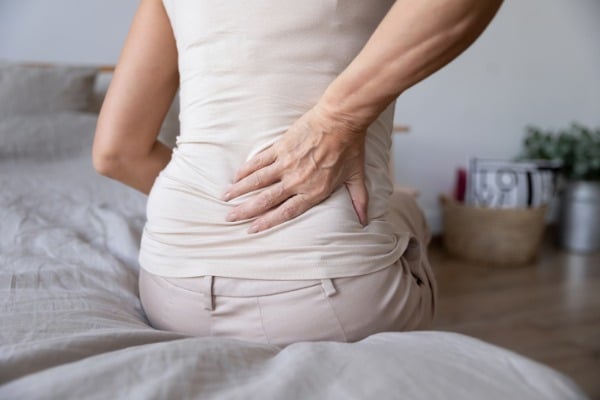What causes Osteoporosis?
Osteoporosis, which literally means porous bone, is a disease in which the density and quality of bone are reduced. As bones become more porous and fragile, the risk of fracture is greatly increased. The loss of bone occurs silently and progressively, so often there aren’t any symptoms until the first fracture occurs.
Who is at Risk?
Because bone loss is gradual and painless, there aren’t usually any symptoms to indicate a person is developing osteoporosis. This is why osteoporosis is often referred to as the silent disease. Often, the first symptom of osteoporosis is a fracture. Most commonly, osteoporotic fractures occur at the spine, the wrist or the hip, although osteoporotic fractures can occur in other bones as well.
While most limb fractures (such as at the wrist or hip) are obvious, spinal fractures can be more difficult to diagnose. This is because they might be painless, or if there is pain, a person may not know it is caused by a fracture due to the many causes of back pain. More obvious signs of spinal fractures are:
- Loss of height
- Development of a curved upper back (sometimes called a Dowager’s Hump)
Since there aren’t usually any outward signs of osteoporosis developing, doctors will often recommend diagnostic testing depending on your age and if you have other risk factors for the disease.
What are your osteoporosis risk factors?
A risk factor is anything that increases your chance of getting a disease.
Having a risk factor, or even several, does not mean that you will have osteoporosis. However, the more risk factors you have, the greater your chance of developing a disease and also, the greater the level of each risk factor, the greater the risk. There are different kinds of risk factors – fixed and modifiable. Some factors, such as age or gender, cannot be changed; whereas others are linked to personal lifestyle choices, such as smoking, alcohol intake and diet.
Osteoporotic Fractures
Around the world, 1 in 3 women and 1 in 5 men aged fifty years and over are at risk of an osteoporotic fracture. In fact, an osteoporotic fracture is estimated to occur every 3 seconds. The most common fractures associated with osteoporosis occur at the hip, spine and wrist. The likelihood of these fractures occurring, particularly at the hip and spine, increases with age in both women and men.
Of particular concern are vertebral (spinal) and hip fractures. Vertebral fractures can result in serious consequences, including loss of height, intense back pain and deformity (sometimes called Dowager’s Hump). A hip fracture often requires surgery and may result in loss of independence or death.
Prevention, Diagnosis and Treatment
The good news is there are many steps that can be taken to prevent and diagnosis osteoporosis. It’s now a largely treatable condition and, with a combination of lifestyle changes and appropriate medical treatment, many fractures can be avoided.
Fixed Risks
Although fixed risk factors cannot be changed, people need to be aware of them so that they can take steps to reduce bone mineral loss. Fixed risk factors also include what is termed ‘secondary risk factors’ – disorders and medications that weaken bone and affect balance (heightening the risk of fracture due to falling). Fixed risk factors include:
- Age
- Female gender
- Family history of osteoporosis
- Previous fracture
- Ethnicity
- Menopause/hysterectomy
- Long term glucocorticoid therapy
- Rheumatoid arthritis
- Primary/secondary hypogonadism in men
Modifiable Risks
Most modifiable risk factors directly impact bone biology and result in a decrease in bone mineral density (BMD), but some of them also increase the risk of fracture independently of their effect on bone itself. These include:
- Alcohol
- Smoking
- Low body mass index
- Poor nutrition
- Vitamin D deficiency
- Eating disorders
- Insufficient exercise
- Low dietary calcium intake
- Frequent falls
You can take action to reduce modifiable risks and, although there is no way to control fixed risks, there are strategies that can lessen their effect.
Preventing Osteoporosis – You can help prevent osteoporosis by leading a bone healthy lifestyle at all stages of life
In fact, osteoporosis prevention begins in childhood, when a bone-healthy diet and plenty of exercise helps children achieve their highest possible ‘peak bone mass’. This is important because the more bone mass you have when you reach adulthood, the less likely you are to have weak and breakable bones at older age.
For women, early prevention is especially important. The diagram below shows how bone loss occurs rapidly after menopause, at around the age of 50, when the protective effect of oestrogen is lost.
What can you do as an adult to prevent osteoporosis?
As an adult, you can do many things to help maintain healthy bones and to avoid premature bone loss. Making simple changes to your diet, taking enough exercise, and kicking bad lifestyle habits will not just help you prevent osteoporosis, but will also benefit your general wellbeing.
- Ensure a healthy diet which includes enough calcium and protein, two key nutrients for bone health
- Get enough vitamin D – made in the skin after exposure to sunlight, the average young adult needs about 15 minutes of daily sun exposure. You can boost your vitamin D intake through some foods like oily fish, eggs, mushrooms, and fortified dairy foods or juices
- Maintain a healthy body weight – being too thin (BMI under 19) is damaging to your bone health
- Keep active! Take regular weight-bearing and muscle strengthening exercise
- Avoiding smoking and heavy drinking
Osteoporosis Prevention Strategies in Seniors
Older adults are at highest risk of osteoporosis, with nearly 75% of hip, spine and wrist fractures occurring in people aged 65 years old or over. The prevention advice listed above applies to all adults, but at older age one should pay special attention to the following:
- Ensuring enough calcium, protein, vitamin D and other nutrients: With age, your ability to absorb vitamins and minerals may be reduced. In fact, older adults often suffer from malnutrition as they may not be eating enough and getting enough protein and vitamins in their diets. A calcium and vitamin D supplement should be considered when dairy consumption is low, and little time is spent outdoors
- Participating in exercise activities that improve balance, posture, coordination, and muscle strength: As we age we lose both bone and muscle mass faster, so exercise becomes even more important. In addition to regular weight-bearing physical activity, older adults should choose exercises which help improve balance and muscle strength
- Be cautious about preventing falls, inside the home and outTake the International Osteoporosis Risk Check here
A poster on how to take care of your bones can also be found here
Download Now




